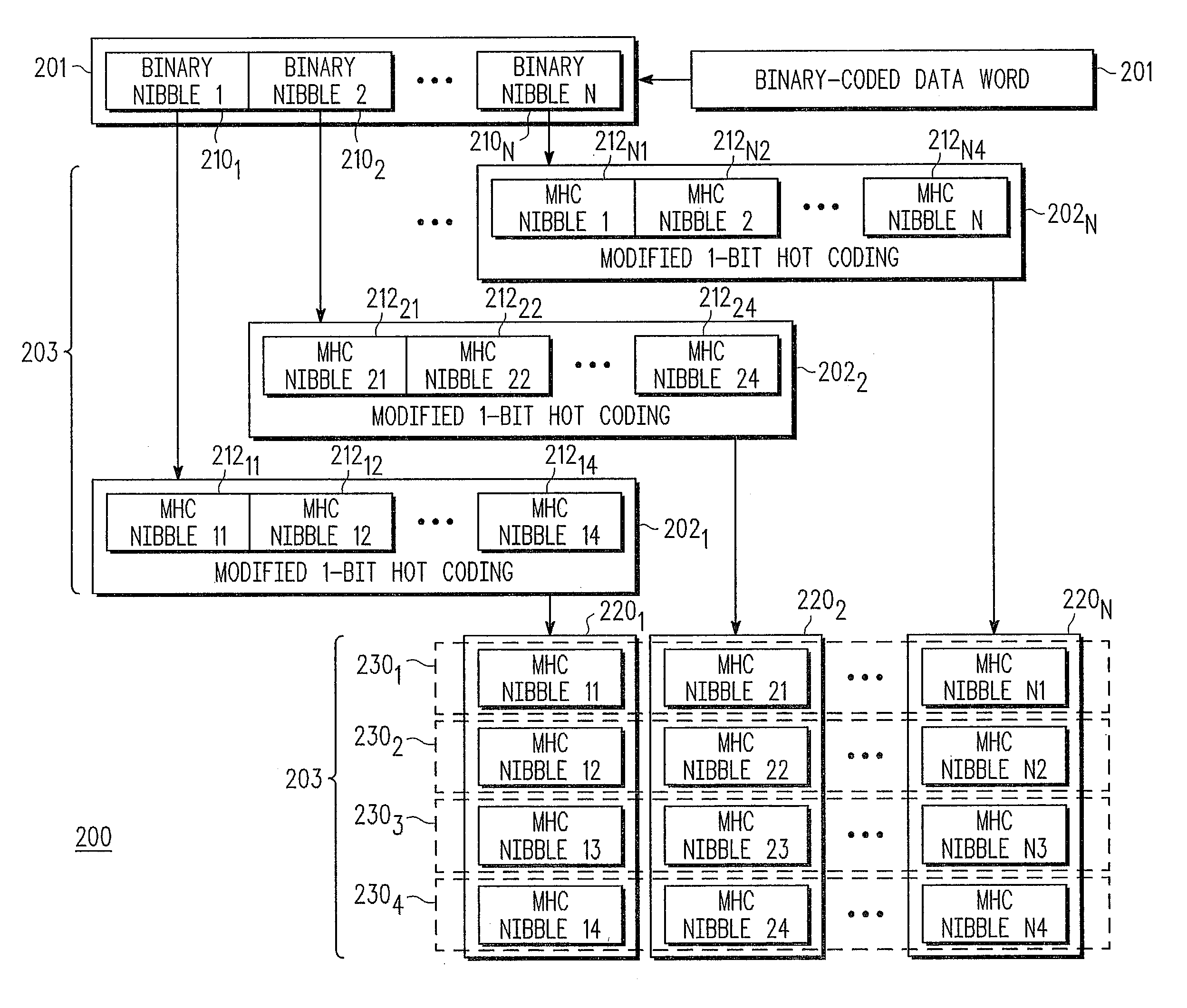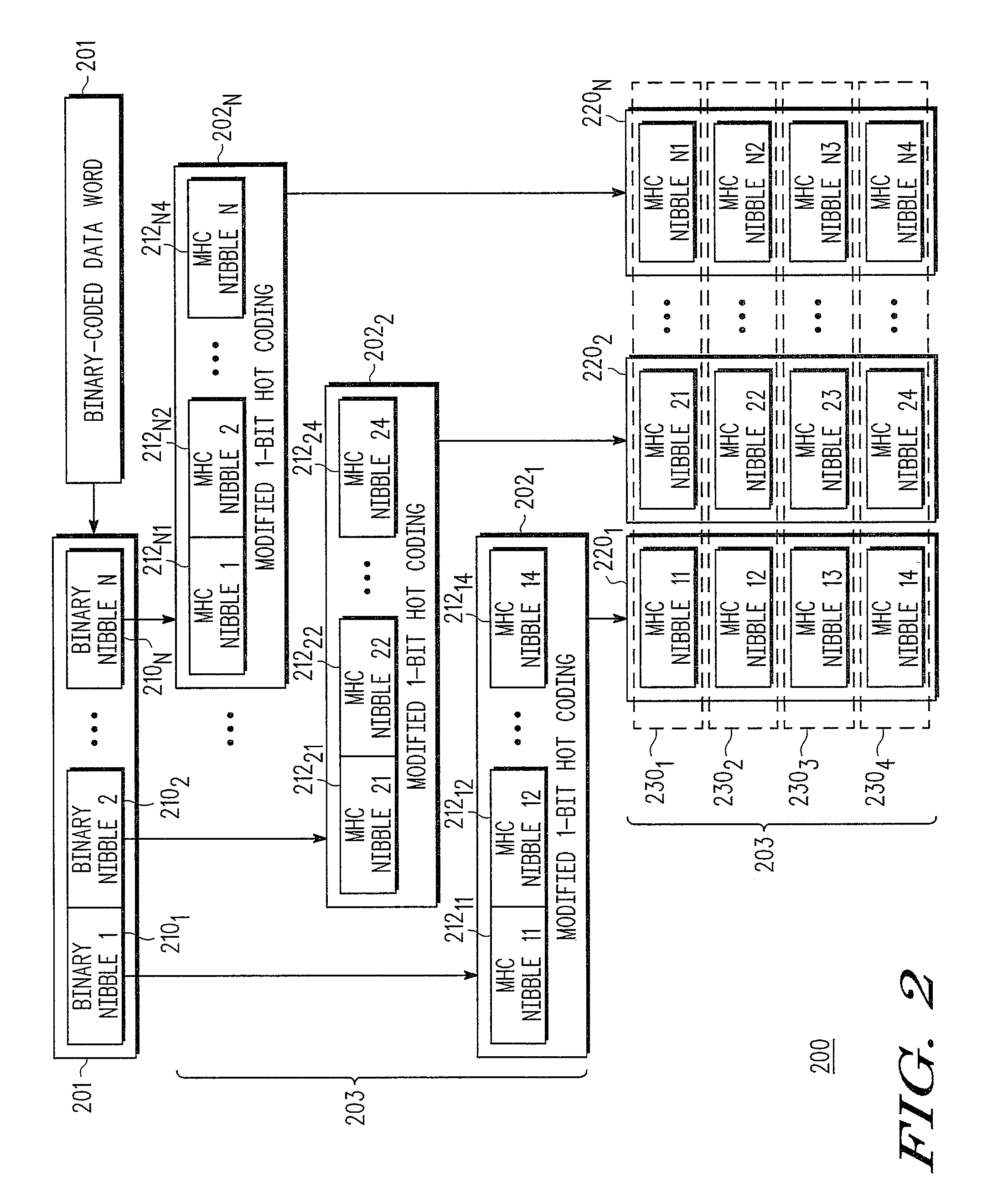Method and system for transmitting data
a technology of transmitting data and method, applied in the direction of individual digit conversion, code conversion, electrical apparatus, etc., can solve the problems of limiting the compatibility between the input/output system and the peripheral device, and consuming up to 70% of the total power
- Summary
- Abstract
- Description
- Claims
- Application Information
AI Technical Summary
Problems solved by technology
Method used
Image
Examples
Embodiment Construction
[0018]Referring to the figures, FIG. 1 depicts a flow diagram illustrating a method 100 for transmitting binary-coded data in accordance with one embodiment of the present invention. In exemplary applications, the method 100 is used to reduce power consumption during data exchanges between or within an IC device, such as SoC devices, or between the IC and peripheral devices. FIG. 2 shows a schematic diagram 200 illustrating a data formatting scheme used in the method 100. FIG. 3 depicts a table 300 illustrating a coding format of the method 100. In various embodiments, method steps of the method 100 are performed in the depicted order or at least two of these steps or portions thereof may be performed contemporaneously or in a different order.
[0019]The method 100 starts at step 101 and proceeds to step 110. At step 110, data words of random binary-coded data to be transmitted are partitioned. Such binary-coded data may represent information, an address of the information, a command,...
PUM
 Login to View More
Login to View More Abstract
Description
Claims
Application Information
 Login to View More
Login to View More - R&D
- Intellectual Property
- Life Sciences
- Materials
- Tech Scout
- Unparalleled Data Quality
- Higher Quality Content
- 60% Fewer Hallucinations
Browse by: Latest US Patents, China's latest patents, Technical Efficacy Thesaurus, Application Domain, Technology Topic, Popular Technical Reports.
© 2025 PatSnap. All rights reserved.Legal|Privacy policy|Modern Slavery Act Transparency Statement|Sitemap|About US| Contact US: help@patsnap.com



